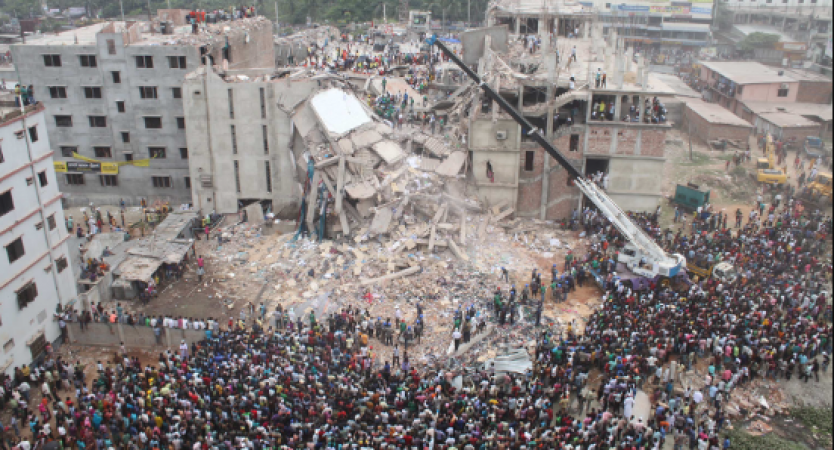
Dhaka: Ten years after the Rana Plaza collapse, which claimed the lives of more than 1,100 garment workers, many Bangladeshis who sew clothing for well-known Western brands claim their factories are still unsafe and offer appalling pay and working conditions.
Ripon Das, a machine operator who works a seven-day workweek and lives a few blocks from the scene of the catastrophe—one of the worst industrial accidents in history—earns 15,000 taka ($141) per month. It is far from sufficient to support his family as the lone provider.
"I choose to work overtime without holidays to supplement my scant wages," said Ripon, 27, whose sister had to quit her job at the same factory after becoming ill because she was not entitled to paid sick leave.
Also Read: White House: Taliban kill Daesh's' mastermind' of the attack on the Kabul airport
Since the collapse of the Rana Plaza factory building, labour advocates claim that safety has significantly improved in the second-largest exporter of clothing, but progress on better pay and conditions, such as sick pay and insurance benefits, has been much slower.
As living expenses rise due to annual inflation that hovers around 10%, union leaders who represent the 4 million workers in the sector are calling for an increase in the sector's minimum wage from the 8,000 taka set in 2018 and revised every five years to 23,000 taka.
"Earlier, I could buy food for two to three days with just 100 taka, but now, I can't afford the same items with even 500," said Jolly Akter, 27, a union leader and garment quality inspector.
Also Read: Japan's ispace admits defeat in its attempt to conduct the first commercial moon landing
A request for comment was not immediately answered by a representative of the government-led minimum wage board, which also includes factory owners and labour representatives.
According to Christie Miedema of the Clean Clothes Campaign, a global alliance of trade unions and non-governmental organisations, international fashion companies that source products from Bangladesh should support the workers' pay demands.
Following the government's launch of a pilot programme last year, she also urged them to support another crucial demand — insurance cover for workers who are injured while performing their jobs.
The pilot programme should become a permanent system that is included in the nation's labour laws, according to Miedema, who also suggested that brands include the costs associated with the injury insurance scheme in the price they charge for their clothing.
The eight-story Rana Plaza building's former location is now a wide open space covered in lush vegetation. The disaster's victims are remembered by a small cement sculpture showing a clenched fist holding a hammer and sickle.
The building collapsed on April 24, 2013, killing Rajib Das, 27, who frequently visits the location.
I was the only member of the family to pursue higher education, so Sanjit, who is only two years older than me and is my closest sibling, supported me, he said.
According to an agreement between the government and companies that sourced from the shuttered factories, the family received a one-time compensation payment, but Rajib claimed that there was no long-term programme to aid survivors and the families of victims in recovering.
Also Read: Pakistan Defence Minister Khawja Asif to skip Delhi trip for SCO meet
The victims received more than $30 million in compensation, but the payments were finished in 2015.
According to Amirul Haque Amin, president of the National Garment Workers Federation, a trade union, many injured Rana Plaza survivors were left to fend for themselves in Bangladesh because there were insufficient social protection programmes in place.
Many of the survivors are having trouble making ends meet, he said.
In the deadliest incident ever seen in the apparel industry, about 2,500 people were hurt, many of them critically.
According to labour advocates and industry leaders, major safety improvements have been made as a result of the disaster's pressure on major brands to upgrade working conditions in their factories.
"The Rana Plaza collapse was the never again moment for Bangladesh's garment sector," claimed Amin from the garment workers federation.
An agreement on fire and building safety called Accord was created by about 200 fashion companies, including well-known names like H&M and Zara. Factory owners, government officials, and labour leaders were also involved.
Labour activists claim that the legally binding Accord helped to make 1,600 factories safer for 2 million workers by conducting thousands of inspections and banning unsafe factories from supplying its signatory buyers.